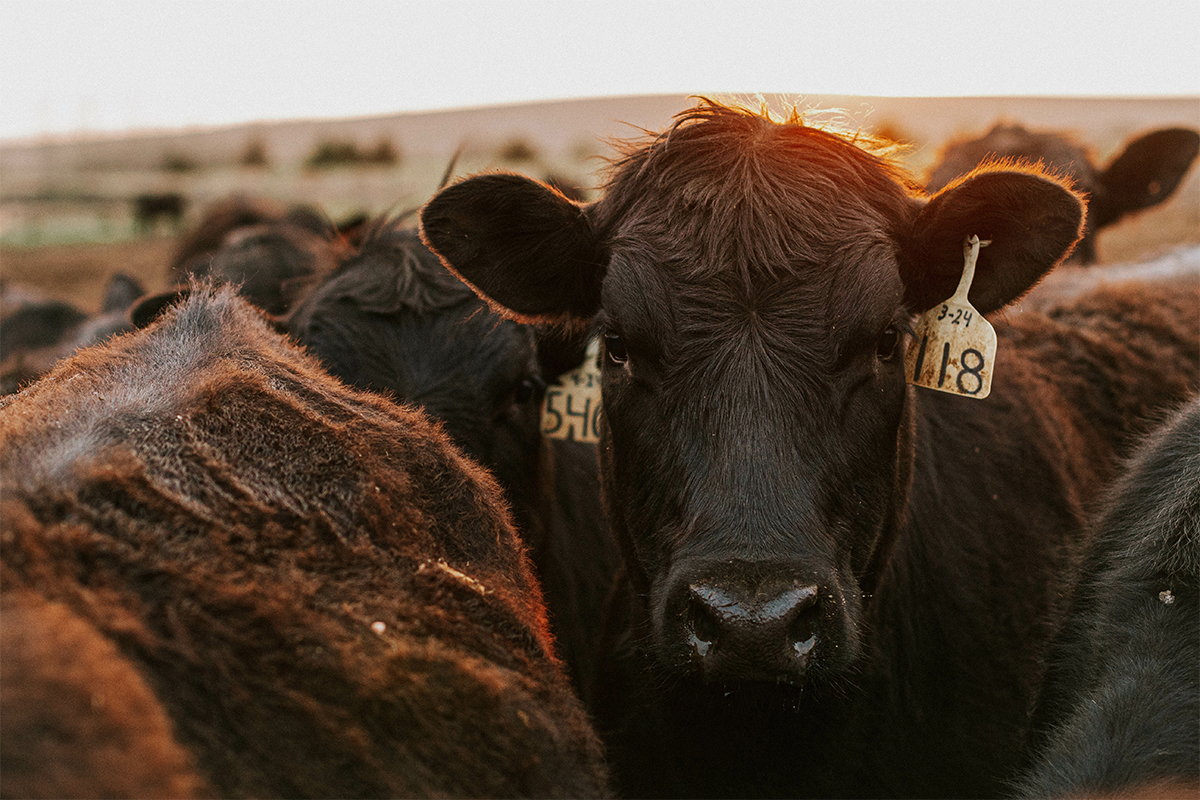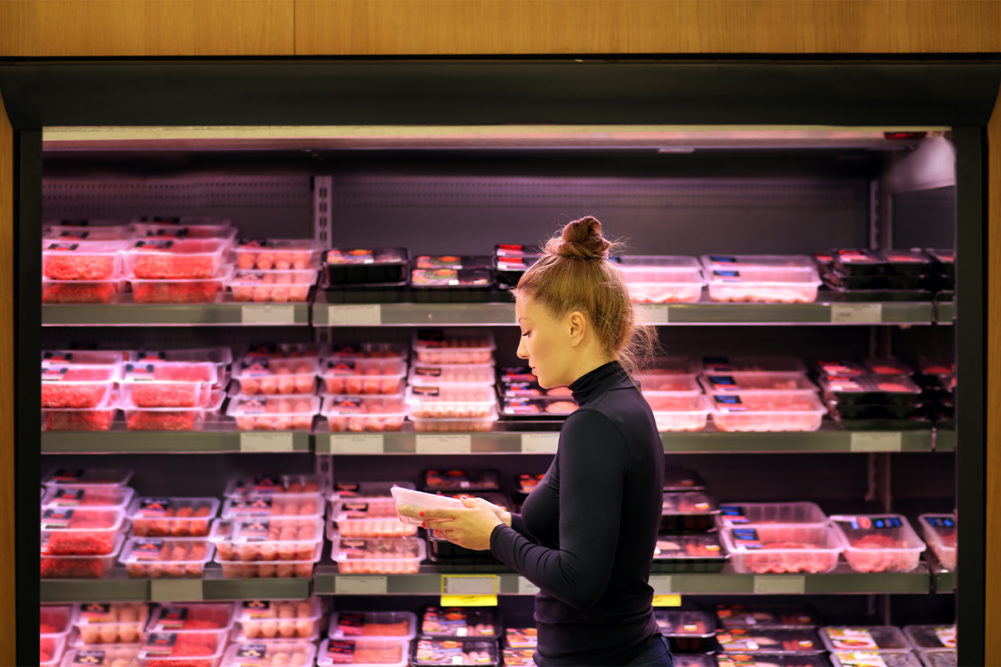In 2023 US consumers can anticipate greater availability of pork, broiler meat and turkey but less beef, which they will have to pay more for than last year. Demand for all proteins will largely depend on consumer concerns about inflation and whether the US economy has moved into a recession.
Beef demand at retail and foodservice is robust. Beef currently has an advantage over pork and chicken at retail as average retail prices in the second half of last year trended below year-ago levels, while pork and chicken prices trended higher. Pork prices even hit a record $5.05 per lb in October, up 4.8% from a year earlier. Beef prices are currently at their most competitive in relation to the competing meats since 2017. But that is likely to change this year.
Demand persists
US consumer demand for beef, pork and chicken was strong before the onset of the COVID-19 pandemic in early 2020. But it got even stronger as US consumers stayed at home and cooked a lot more. Beef was the biggest winner of all the meats, as consumers sought a meat treat in exchange for not being able to eat out at most dine-in restaurants for many months. Beef retail prices eventually reached record-high levels in October 2021. The US Department of Agriculture’s All Fresh beef price averaged $7.55 per lb and its Choice price averaged $7.90 per lb. They began to decline after that and in October this year averaged $7.25 per lb and $7.42 per lb, respectively. These were down 4% and 6.1%, respectively, from October 2021.
Of special interest is that retail demand for high quality beef has remained strong. The two largest sellers of USDA Prime beef, Costco and Walmart, both report that sales remain robust. This is reflected in the price spread between the Prime and Choice beef wholesale cutouts reported by USDA each week. The spread hit a record-high $91.46 per cwt the week ended Sept. 23 last year. The bottom line is that American consumers continue to pay more for high quality beef at both retail and foodservice, with the latter sector having mostly recovered sales and foot traffic after the impact of the COVID-19 pandemic.
 Inflation hasn't deterred consumers' demand for high-quality beef products, including Choice and Prime cuts. (Source: ©MCKENNA - STOCK.ADOBE.COM)
Inflation hasn't deterred consumers' demand for high-quality beef products, including Choice and Prime cuts. (Source: ©MCKENNA - STOCK.ADOBE.COM)
Cattle call
Cattle feeders and beef processors of both fed and non-fed cattle will face tighter cattle supplies in 2023. The Jan. 1, 2023, US cattle herd total might be down 2.4 million head from Jan. 1 this year to 89.5 million head. This goes against the current cyclical peak of 94.8 million head in 2019 and would be the lowest cattle inventory since 2015. The decline is mostly due to severe, widespread drought and high input costs at the ranch and farm levels. These factors have forced cattle producers to liquidate some of their beef cows and put more heifers in feedlots.
Drought continues to plague the cattle sector, noted analyst Andrew Gottschalk of HedgersEdge.com in early December. This may lead to some additional herd liquidation during the first quarter of this year, albeit at a slower pace than last year. Exceptional drought continues to plague several leading cattle states, he said. The following states were ranked in late November by the percent of cattle inventory in exceptional drought severity per the US Drought Monitor: California 61%, Kansas 58%, Nebraska 28% and Oklahoma 27%. The following states were also rated by their total cattle inventory in varying degrees of drought severity: California 100%, Colorado 96%, Idaho 99%, Kansas 90%, Kentucky 100%, Nebraska 100%, Oklahoma 99%, Oregon 100%, South Dakota 96%, Texas 86% and Utah 100%. Continued widespread drought poses an ongoing risk to the cattle complex in 2023, Gottschalk said.
The elevated levels of female slaughter reveal that many cow-calf producers across the country reduced their herds last year. Weekly beef cow slaughter was higher year-over- year for 70 consecutive weeks, said Derrell Peel, PhD, livestock marketing specialist at Oklahoma State University. In that period, on only four occasions has the year-over-year increase been less than 3%. By early December, beef cow slaughter was up 12.3% year-over-year. If slaughter declined to just equal to year-ago levels for the remaining weeks of the year, total beef cow slaughter for the year would have been up 10.5% year-over-year. This would be a net beef cow herd culling rate of 13.1% for the year, a new record level, Peel said.
Heifer slaughter however did not show any signs of decreasing, Peel said. By several relative measures, 2022 heifer slaughter was at the highest level since 2003. Total cow plus heifer slaughter was likely to average over 50% for the year. This is the highest female slaughter percentage since 1986. With drought continuing, it is not clear what to expect for cow and heifer slaughter going forward, Peel said. It seems likely that many producers have adjusted herd inventories, given hay and feed supplies, to be able to get through the winter. This might mean that cow culling will slow down through the winter. But if La Nina persists next spring, more liquidation can be expected, he said.
In contrast to the sharp decline of cattle numbers and lower beef production, pork and poultry will see increased production. Consumers will still have ample protein supplies to choose from in 2023. Total red meat and poultry disappearance (per capita consumption) is projected to be 227.4 lbs, versus an estimated 227.1 lbs in 2022. This will reflect the 11th consecutive year of record broiler production and the recovery of turkey production from the impact of avian influenza. USDA in November forecast 2023 beef production at 26.27 billion lbs, versus an estimated 28.347 billion lbs in 2022. This means a 7.3% decline in beef production year-on-year. USDA forecast 2023 pork production at 27.345 billion lbs, versus an estimated 27.121 billion lbs in 2022. It forecast 2023 broiler production at 46.825 billion lbs, versus an estimated 45.974 billion lbs in 2022.
Exports thrive
US beef exports have been one of the top stories in the US beef industry in recent years. Exports topped $1 billion in seven out of eight months to the end of August last year. For the first nine months, beef exports increased 4% from a year ago to 1.12 million tonnes, valued at $9.12 billion, 20% above last year’s record pace. China/Hong Kong was the second largest value destination for US beef last year and the US beef industry will be hoping this continues in 2023.
Pork exports meanwhile gathered momentum last August and September, with both months recording year-on-year gains in volume. But through September, volume and value was down 13% and 11% respectively in 2021. The pork industry will be hoping that exports continue to recover in 2023.


